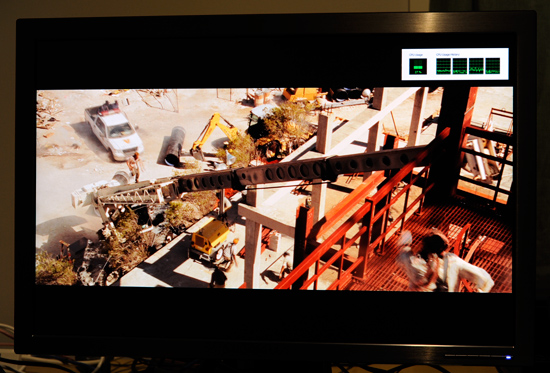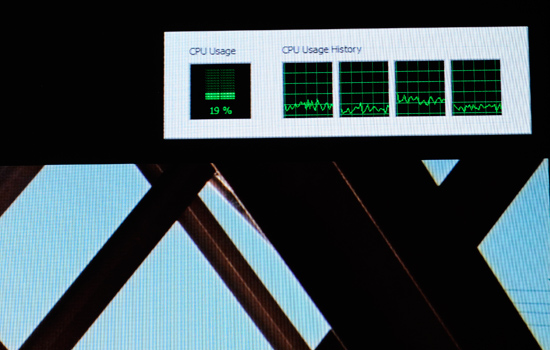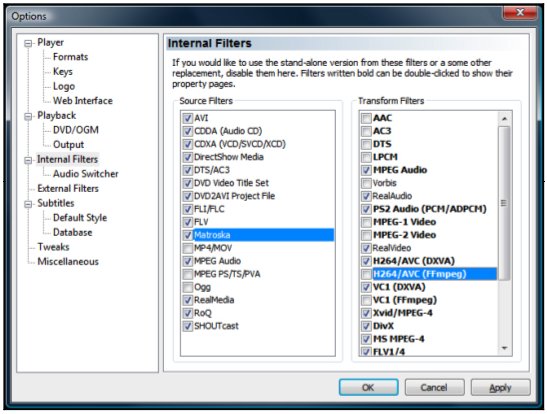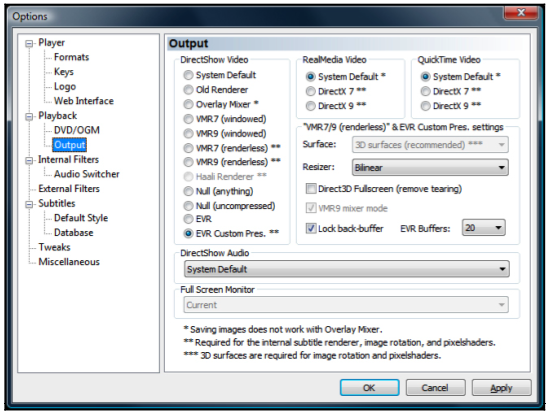Zotac's Ion: The World's First mini-ITX Ion Board
by Anand Lal Shimpi on May 12, 2009 12:00 AM EST- Posted in
- GPUs
Blu-ray Playback: It Works Quite Well
I tried using the Zotac Ion to watch Blu-ray movies, after all, that’s one of the major reasons to get this thing over the much cheaper Intel alternative. NVIDIA’s Ion chipset (aka GeForce 9300) can fully decode H.264 and thus make high definition movies watchable on the otherwise incapable Atom CPU.
Anything that supports NVIDIA’s PureVideo HD will work on the Ion board, in this case I used Cyberlink’s PowerDVD 9 Ultra - the latest version off of Cyberlink’s website. I fired up Casino Royale and watched, the CPU utilization across all four virtual cores (two physical cores) ranged between 19 - 27% on average. At times I saw steady peaks at 36% and the highest I ever saw was 50% in an unexpectedly stressful scene. With the dual-core Atom, I never saw any dropped frames.

The high CPU utilization is simply due to the content decryption required by every copy protected Blu-ray disc, the actual decode is being done completely in hardware. If you playback an unencrypted Blu-ray disc you get CPU utilization in the 10 - 14% range.

Earlier versions of PowerDVD were not well optimized for Atom, but the latest updates to PowerDVD 8 and PowerDVD 9 ensure smooth playback on even a single-core Atom/Ion system (I used an older version of PowerDVD in my short lived Ion Blu-ray Investigation which was the cause for poor performance in those tests). Note that at one point in my testing I saw the CPU usage hit 50% on the Atom 330, which means it would be at 100% with an Atom 230. The spike only lasted for a second or two but it's possible for a single-core Atom setup to stutter in situations like that if you have a background task running at the same time.
You can even get hardware acceleration using the Ion board under Media Player Classic - Home Cinema. Using the latest stable build of MPC-HC you simply need to go to the Options menu (View -> Options) and configure a few items. Click on Output then select EVR or EVR Pres. if you want to enable subtitles.

Then click on the Internal Filters option and disable all FFmpeg transform filters, enable all DXVA transform filters and enable the Matroska source filter (for playing back MKVs).

If you configure MPC-HC as I described above you'll get full hardware acceleration on the Ion board. This is a great way of watching your own ripped content. Without encryption CPU utilization ends up being in the 10 - 14% range, allowing you to even do things in the background while you're watching a video. I would caution you against doing too much however, so much as scrolling the volume slider up/down will cause the video playback to stutter. You're probably better off just being happy that you're not dropping any frames and not touch anything while you enjoy your movie.










93 Comments
View All Comments
ahmshaegar - Tuesday, May 12, 2009 - link
Greater power consumption = more heat. Where's that energy going to go?marshylucas - Tuesday, May 12, 2009 - link
You were faster, I was about to reply something similar.Thumbs up for the fanless design!
Jeffk464 - Tuesday, May 12, 2009 - link
Yes, but my laptop is very quiet, even with being severely limited on space for a heat sink and fan. If you had more rooms to put a large heat sink on it with a large low rpm fan, I think it would be near silent.trabpukcip - Friday, May 15, 2009 - link
A laptop does not make the best HTPC though. Connectivity is too limited and is generally inconvenient.GeorgeH - Tuesday, May 12, 2009 - link
"a single Gigabit Ethernet port (just like on the Intel boards)"Actually, only the D945GCLF2 has Gigabit Ethernet. The D945GCLF is stuck with 10/100, which is kind of a deal killer for me.
Anand Lal Shimpi - Tuesday, May 12, 2009 - link
Thanks for the correction :)Take care,
Anand
DrLudvig - Tuesday, May 12, 2009 - link
I'm confused here, most places it says that the hole ION thing is a 9400 chip, while some other places, like now here, says 9300?What is it really?
Anand Lal Shimpi - Tuesday, May 12, 2009 - link
The 9300 and 9400 are the same chip, the difference is GPU clock. Take a look at the table on this page:http://www.anandtech.com/mb/showdoc.aspx?i=3432">http://www.anandtech.com/mb/showdoc.aspx?i=3432
The GF9300 on the Zotac board actually runs a bit slower than the stock GeForce 9300. It runs its core at 450MHz and its shaders at 1.1GHz instead of 450/1.2.
Take care,
Anand
Badkarma - Tuesday, May 12, 2009 - link
Anand,Can you please confirm/deny if the Zotac Ion boards support wake-on-usb? The Zotac 9300 mini-itx board does not support wake-on-usb and therefore powering the system on from standby from the MCE remote does not work without physical workarounds.
Thanks.
Anand Lal Shimpi - Tuesday, May 12, 2009 - link
I'm out of the office right now but I'll try it this weekend :) Drop me an email to remind me if you don't see something by the end of next week :)Take care,
Anand